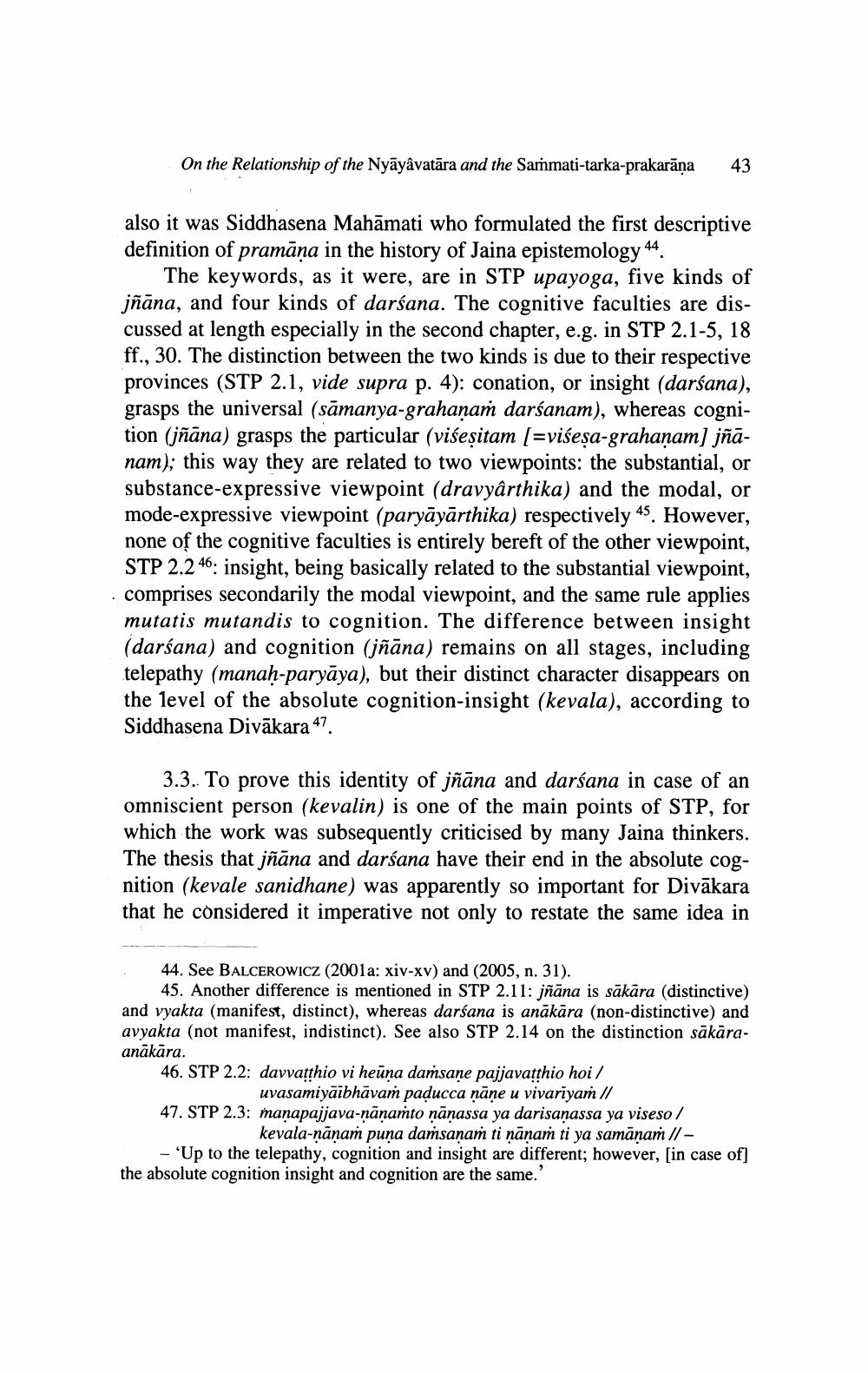________________
On the Relationship of the Nyāyâvatāra and the Sammati-tarka-prakarāna
43
also it was Siddhasena Mahāmati who formulated the first descriptive definition of pramāņa in the history of Jaina epistemology 44.
e keywords, as it were, are in STP upayoga, five kinds of jñāna, and four kinds of darśana. The cognitive faculties are discussed at length especially in the second chapter, e.g. in STP 2.1-5, 18 ff., 30. The distinction between the two kinds is due to their respective provinces (STP 2.1, vide supra p. 4): conation, or insight (darśana), grasps the universal (samanya-grahanam darśanam), whereas cognition (jñāna) grasps the particular (viseșitam (=viseșa-grahanam) jñānam); this way they are related to two viewpoints: the substantial, or substance-expressive viewpoint (dravyârthika) and the modal, or mode-expressive viewpoint (paryāyārthika) respectively 45. However, none of the cognitive faculties is entirely bereft of the other viewpoint, STP 2.2 40: insight, being basically related to the substantial viewpoint, comprises secondarily the modal viewpoint, and the same rule applies mutatis mutandis to cognition. The difference between insight (darśana) and cognition (jñāna) remains on all stages, including telepathy (manah-paryāya), but their distinct character disappears on the level of the absolute cognition-insight (kevala), according to Siddhasena Divākara 47.
3.3. To prove this identity of jñāna and darśana in case of an omniscient person (kevalin) is one of the main points of STP, for which the work was subsequently criticised by many Jaina thinkers. The thesis that jñāna and darśana have their end in the absolute cognition (kevale sanidhane) was apparently so important for Divākara that he considered it imperative not only to restate the same idea in
44. See BALCEROWICZ (2001a: xiv-xv) and (2005, n. 31).
45. Another difference is mentioned in STP 2.11: jñāna is sākāra (distinctive) and vyakta (manifest, distinct), whereas darśana is anākāra (non-distinctive) and avyakta (not manifest, indistinct). See also STP 2.14 on the distinction sākāraanākāra. 46. STP 2.2: davvatthio vi heūna daṁsane pajjavatthio hoi/
uvasamiyāibhāvam paducca ņāne u vivariyam // 47. STP 2.3: manapajjava-nānasto nānassa ya darisanassa ya viseso /
kevala-ņāņam puņa damsanam ti ņānam ti ya samānam // - - "Up to the telepathy, cognition and insight are different; however, [in case of] the absolute cognition insight and cognition are the same.'




